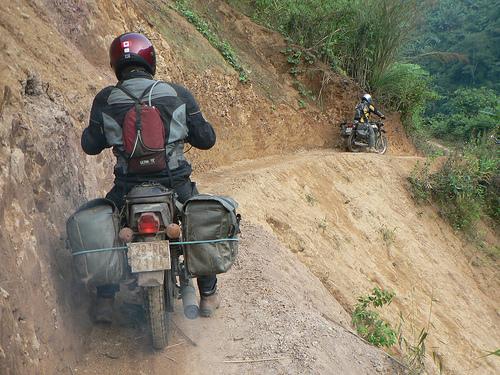Tailor Made Holidays with our travel experts
We'll do our best to call you within 48h

Nghia Lo
~250km North of Hanoi, in the heart of the second largest rice field in North Vietnam, Yen Bai province. This is a nice stop on Road 32, at the foot of Hoang Lien range that extends as far as Sapa. Accommodation is good and clean.
Than Uyen
A small town, ~400km North of Hanoi, ~120km South of Sapa, Than Uyen district, Lai Chau province. This is on the high mountain massif of Hoang Lien range with the peak is Fansipan (3,143m above sea level), the roof of Indochina. Accommodation is basic.
Sapa
A hill station built by the French in early 20th century, ~400km North of Hanoi, Sapa district, Lao Cai province. This town is about 1,600n above sea level and is one of the few places in Vietnam that had snow. Accommodation is good. With the fast extension and more tourists, the town itself usually have more foreigners than local people.
Bac Ha
A new Sapa, ~400km from Hanoi, ~120km from Sapa. The town is famous for its Tam Hoa plum which must bloom three times before they are ripe. Vietnamese whisky distilled in Bac Ha is also a favourite drink.
Ha Giang
The most beautiful province in North Vietnam and probably of the whole Vietnam. ~320km North of Hanoi. You take in stunning mountain scenery, meet friendly people and Sunday market is colourful.
Dong Van
~200km from Ha Giang city, ~500km from Hanoi. Probably the most beautiful place in North Vietnam. Dong Van Karst Plateau Global Geopark is located in the north-eastern province of Vietnam, Ha Giang. It is the first Geopark in Vietnam and the second one in South-east Asia to be recognized by UNESCO. The Geopark was formed about 550 million years ago and now is home to 17 ethnic groups which creates the unique and rich cultural heritage of this area. Sunday market is probably the most colourful one in North Vietnam.
Bao Lac
~ 400km from Hanoi, located in the very north of Vietnam, in a mountainous area at the border with China. Local people live mainly in remote small villages with no waterworks or other infrastructure. This area is among the poorest in Vietnam. The town itself is small and there is nothing special rather than the only stop with basic accommodation in this area.
Cao Bang
A big town in Northeast Vietnam, the capital city of a province with the same name, ~180km from Lang Son or ~400km from Hanoi. The city is also known for the Battle of Cao Bang, the first major decisive victory of the Viet Minh against the French Army along Highway 4. We use this town as a base because there is no better accommodation in the surrounding areas.
Lang Son
A major trading post in Northeast Vietnam, possibly the largest border gates between Vietnam and China, ~150km from Hanoi in the far North. Lang Son and its ancient citadel have been in the path of many invasions, and were the site of three French defeats during the colonial era. The city was the centre of fighting during the Sino-Vietnamese War of 1979, and sustained extensive damage. However, with a surprising fast recovery, there is almost no trace of the war but a prosperous trading town. A chance to buy cheap Chinese electronic items, fakes that cost from 1/10 of the original products.
Quang Hoa
A commune of mainly Nung people in Quang Uyen district, Cao Bang province, ~400km North of Hanoi via Lang Son or ~500km via Cao Bang. The village is one of the first to offer homestay experience to foreigns who travel there on two wheels. The host house is basic but cosy. The nearby Ban Gioc waterfalls is a scenic site, however with the booming trade at Po Peo border gate the road to this place is usually in bad conditions, either dusty or muddy.
Vu Linh, Thac Ba
A commune of mainly Dao people in Yen Binh district, Yen Bai province, 180km North of Hanoi. The village is on the lower end of Thac Ba lake. The homestay we use is not far from the lake where we could have a boat ride and swim in the clear water. In late 1990’s Ngoi Tu village started to welcome the first foreigners and now it’s a popular place for home stays. However, Ngoi Tu faces a garbage disposal problem and this is evident in the diminishing quality of water courses and a gradual influx of tourists puts strain on the local environment.